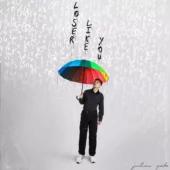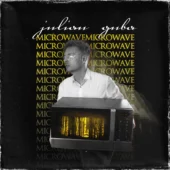Pop Music

Pop Music Genre: A Comprehensive Guide
The first thing you should do is take a look at Julian Guba’s Pop Music.
Popular music has been around for over half a century and continues to dominate the charts worldwide. It is a genre that has evolved over the years, with its sound and style adapting to the times. In this article, we will explore the history, characteristics, and subgenres of pop music.
Introduction
- Definition of Pop Music
- Brief History of Pop Music
Pop music, short for popular music, is a genre that encompasses a wide range of musical styles that appeal to a large audience. Its catchy melodies, rhythmic beats, and relatable lyrics characterize it. Popmusic originated in the United States in the 1950s and quickly gained popularity around the world. Various music genres such as rock and roll, R&B, and country influenced it.
Throughout its history, pop music has evolved and adapted to reflect the changing tastes and preferences of the audience. Today, it continues to dominate the music industry, with artists like Taylor Swift, Ariana Grande, and Justin Bieber shaping the contemporary pop music landscape.
The Evolution
- The 1950s and 1960s: The Birth of Pop Music
- The 1970s: The Disco Era
- The 1980s: The Rise of Synthpop and New Wave
- The 1990s: The Age of Boy Bands and Girl Groups
- The 2000s and Beyond: Pop Music in the Digital Age
The evolution of that genre has been a fascinating journey that has seen various shifts and transformations throughout the decades. The 1950s and 1960s marked the birth of popmusic, with artists like Elvis Presley and The Beatles dominating the charts. The 1970s brought in the disco era, characterized by catchy and danceable tunes from artists like Donna Summer and Bee Gees. The 1980s witnessed the rise of synth pop and new wave, with acts like Duran Duran and Depeche Mode incorporating electronic elements into their music. The 1990s was defined by the age of boy bands and girl groups, with acts like the Backstreet Boys and Spice Girls achieving massive success. As we entered the 2000s and beyond, pop music embraced the digital age, with artists like Britney Spears and Justin Timberlake utilizing technology and online platforms to reach a wider audience. Popmusic continues to evolve and adapt to the ever-changing musical landscape, with artists experimenting with different genres and styles to stay relevant in today’s music industry.
Characteristics
- Catchy Melodies and Hooks
- Simple and Repetitive Chord Progressions
- Use of Electronic Instruments
- Emphasis on Production
- Focus on Vocals and Lyrics
The creators of pop music carefully craft catchy melodies and hooks that can get stuck in your head for days, ensuring that a wide audience easily remembers and enjoys them. Additionally, pop music often relies on simple and repetitive chord progressions, making it accessible and easy to sing along to. Electronic instruments play a significant role in pop music, with synthesizers and drum machines adding a modern and danceable element to the sound. Pop music also places a strong emphasis on production, with meticulous attention to detail in the arrangement, mixing, and mastering of the songs. Finally, pop music focuses on vocals and lyrics, with the singer’s performance taking center stage and the lyrics often exploring themes of love, relationships, and personal experiences.
Subgenres
- Bubblegum Pop
- Dance-Pop
- Electropop
- Synthpop
- Teen Pop
- R&B Pop
Pop music is a genre that has evolved and diversified over the years, giving rise to several subgenres that cater to different musical tastes and preferences. One such subgenre is bubblegum pop, which is characterized by its catchy melodies and upbeat lyrics, typically targeting a younger audience. Dance-pop, on the other hand, incorporates elements of electronic dance music to create energetic and infectious tracks that are perfect for the dance floor. Electropop takes this a step further by heavily relying on electronic instruments and synthesizers to create a futuristic sound. Synth pop, as the name suggests, focuses on synthesizers and electronic sounds to create a nostalgic yet modern sound. Teen pop, as the name implies, is specifically targeted towards teenagers and often features young artists singing relatable lyrics. Finally, R&B pop infuses elements of rhythm and blues with pop music, resulting in smooth and soulful tracks that showcase both melodic and vocal prowess. With such a wide range of subgenres, pop music continues to captivate audiences worldwide.
The Influence
- in Fashion and Culture
- Social Media
- Politics
Pop music has long been a powerful force in shaping fashion and culture. From the Beatles’ iconic hairstyles to Madonna’s bold fashion choices, pop stars have been trendsetters for decades. Their music videos and performances have not only influenced the way people dress, but also the way they express themselves. In the age of social media, pop music has become even more influential, with artists using platforms like Instagram and TikTok to showcase their personal style and connect with fans. Moreover, pop music has also played a role in politics, with artists using their platforms to raise awareness about social issues and advocate for change. Whether it’s through fashion, social media, or politics, pop music continues to leave a lasting impact on society.
Pop Music’s Critics
- The Critique of Pop Music
- The Debate over Authenticity
Pop music has always had its fair share of critics who argue against its authenticity. These critics claim that pop music is manufactured, formulaic, and lacks any real substance. They argue that record labels create it solely for commercial success, designing catchy hooks and repetitive lyrics to appeal to the masses.
The debate over authenticity in pop music has been ongoing, with some arguing that it is a true expression of popular culture and others dismissing it as shallow and devoid of any artistic merit. Despite the criticism, pop music dominates the charts and captivates audiences worldwide, thus proving that its appeal cannot be easily dismissed.
What makes Pop Music a Pop Music?
| Criteria | Explanation |
|---|---|
| Catchy Melodies | Pop music is known for its memorable and easy-to-sing-along melodies. These hooks are designed to get stuck in your head and stay there. |
| Simple Chord Progressions | Typically features simple and repetitive chord progressions that are easy to follow. This allows listeners to focus on the melody and lyrics. |
| Electronic Instruments | Pop music often incorporates electronic instruments, such as synthesizers and drum machines, to create a polished and modern sound. |
| Emphasis on Production | Pop music places a strong emphasis on production values, with a focus on creating a polished and professional sound. |
| Vocals and Lyrics | Often features strong vocal performances and relatable lyrics that speak to universal emotions and experiences. |
Pop music has been influencing many aspects of society and has been a fixture in our lives for decades.
Its sound and style may change over time, but its ability to connect with people remains. Whether you love it or hate it, there is no denying the power of pop music.
FAQs
- What is the difference between pop music and other genres? Its catchy melodies, simple chord progressions, and focus on production characterize that genre. It also aims to appeal to a wide audience, and its popularity often transcends musical boundaries.
- Who are some of the most famous pop artists of all time? Some of the most famous pop artists of all time include Michael Jackson, Madonna, Britney Spears, Beyoncé, and Justin Bieber.
- What is the role of technology in that genre? Technology has played a significant role in shaping the sound of pop music. Electronic instruments, such as synthesizers and drum machines, have become commonplace, and the use of autotune and other effects has become standard practice.
- Is pop music considered “real” music? There is ongoing debate about whether pop music is “real” music, with some critics arguing that it is too formulaic and lacks artistic merit. However, many people find value in pop music’s ability to connect with a wide audience and convey relatable emotions.
- What is the future of popular music? As technology continues to advance and musical tastes change, the future of pop music is uncertain. However, one thing is for sure: pop music will continue to evolve and adapt to the times, remaining a powerful force in popular culture.












